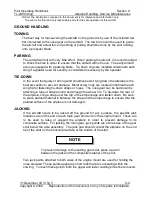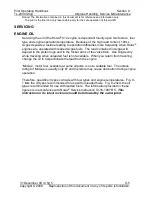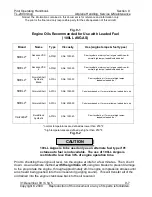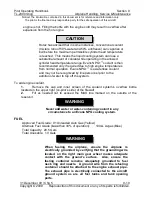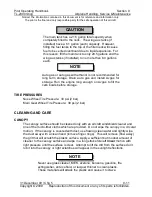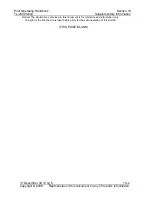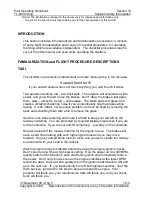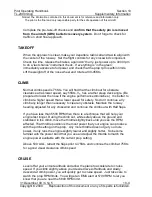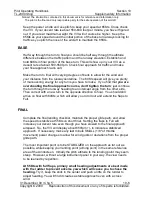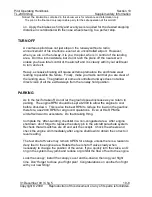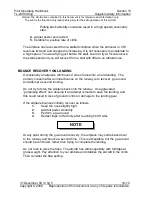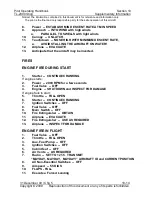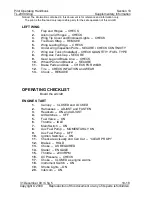
Pilot Operating Handbook
Section 10
TL-2000
Sting
Supplementary Information
Notice! The information contained in this document is for reference and information only.
The pilot is the final and only responsible party for the safe operation of this aircraft.
31 December 09 / Chg 5
10-4
Copyright © 2009 Reproduction of this document or any of its parts is forbidden.
Complete the pre-take-off checks and
confirm that the safety pin is removed
from the aircraft (GRS) ballistic recovery system
. Don't forget to check for
traffic on short final approach.
TAKEOFF
When the approach is clear, make your departure radio call and taxi to align with
the center of the runway. Set the flight controls for any crosswind component.
Check the time, release the brakes, again don't hurry, just power up to 4000 rpm
to do a 'last chance' instrument check. If everything is ‘in the green’,
immediately advance to full power and check that the prop rpm is within limits.
Lift the weight off of the nose wheel and rotate at 40-45Kts.
CLIMB
Normal climb speed is 75Kts. You will find that the climb out for obstacle
clearance at la slower speed, say 55Kts, V
y
, has a rather steep deck angle. (Be
prepared to lower the nose if the engine performance diminishes.) It is better to
climb at a higher speed than a lower speed for safety. So don’t continue a Vy
climb any longer than necessary to clear any obstacle. Maintain the runway
heading adjusted for any crosswind and continue the climb out with Half flaps.
If you have less than 5500 RPM then there is a technique that will help your
engine last longer. During the climb out, while safely above the ground and
stabilized in the climb, move the throttle slightly back until you see the RPM
affected. That throttle position is the most power that your engine can produce
with the pitch setting on the prop. Any more throttle does not get you more
power, it only runs the engine slightly leaner and slightly hotter. So become
familiar with the power band that you use and adjust the throttle to match the
engine power available with the current prop setting.
Above 500’ AGL, retract the flaps prior to 75Kts and continue the climb at 75Kts
for a good visual clearance climb speed.
CRUISE
Level off at your enroute altitude and allow the plane to accelerate to cruise
speed. If you climb slightly above your desired level-off altitude and slowly
descend at climb power, you will quickly get to cruise speed. Just take care to
watch the prop RPM limits. You will get an EMS alert at 5700 RPM to let you
know that you are near the 5800 RPM limit.



